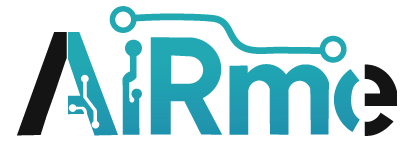
Quantum computing has long been considered the next frontier in the world of computing, with the promise to solve complex problems that classical computers simply cannot handle. However, one of the major challenges that has impeded the widespread adoption of quantum computing is the issue of quantum error correction. Quantum systems are inherently fragile, and qubits (the fundamental units of quantum computers) are highly susceptible to environmental noise and errors that can disrupt computations.
Amazon’s introduction of the Ocelot quantum chip marks a significant step forward in addressing these challenges. Designed to handle error correction efficiently and at scale, the Ocelot chip aims to bring us closer to practical quantum computing—where quantum systems can be used for real-world applications like drug discovery, material science, and even artificial intelligence.
In this blog, we will explore the Ocelot chip’s unique design, its potential applications, and how it fits into the broader quantum computing race. We’ll also delve into the quantum error correction techniques that Ocelot uses, which may pave the way for scalable, fault-tolerant quantum systems.
What is Amazon’s Ocelot Quantum Chip?
Amazon Web Services (AWS) has been a major player in cloud computing for years, and now it is setting its sights on quantum computing with its newly introduced Ocelot chip. Ocelot is a quantum processing unit (QPU) designed to improve the reliability and scalability of quantum computers.
Unlike traditional semiconductor-based chips used in classical computing, Ocelot employs a novel qubit architecture called cat qubits, based on optical technology. These cat qubits are named after Schrödinger’s cat, a thought experiment that describes a system that can exist in multiple states simultaneously—an essential property of quantum systems. Cat qubits, in essence, represent superpositions of coherent states of light, which allows for more stable qubits compared to previous designs.
Addressing Quantum Error Correction
One of the most significant obstacles to the practical use of quantum computers has been the issue of quantum error correction. In classical computing, error correction techniques are well-established, such as parity checks and redundancy in data storage. However, quantum systems are different because qubits can exist in multiple states simultaneously, and any interaction with the environment can lead to decoherence—the loss of quantum information.
For quantum computers to become useful for solving real-world problems, they need to be able to perform large-scale computations without errors that would invalidate the results. This is where Ocelot’s approach to error correction comes into play.
Ocelot’s quantum error correction relies on optical cat qubits, which inherently reduce the likelihood of certain types of errors. Unlike traditional qubits, which are susceptible to bit flips or phase errors, cat qubits are designed to be robust against noise—one of the primary causes of errors in quantum systems. By leveraging this inherent stability, Ocelot offers an efficient way to carry out error correction while reducing the computational overhead typically associated with this process.
How Ocelot Uses Cat Qubits for Error Reduction
At the core of Amazon’s Ocelot chip are cat qubits, a type of optical qubit that can be created using photons (light particles). Photons are less susceptible to certain types of errors, such as phase flips, because they are much harder to influence by external noise. The cat qubits in Ocelot are designed to encode quantum information in superposition states of coherent light, which allows for highly stable qubit states.
Optical Quantum Computing and Error Tolerance
The ability of cat qubits to remain coherent over long periods allows Ocelot to minimize one of the most problematic challenges in quantum computing—decoherence. Decoherence happens when qubits lose their quantum properties due to interactions with their environment. Optical qubits, particularly those based on coherent light, are more resistant to these interactions, making them highly suitable for error correction tasks.
Amazon’s quantum error correction protocols built into Ocelot also reduce the number of redundant operations typically required by traditional quantum error correction techniques. Rather than using multiple qubits to encode the same piece of information and redundantly performing error correction in parallel, Ocelot’s design makes the process more efficient and scalable. This enables the quantum computer to execute computations faster and more accurately, even with large-scale systems.
Applications of Ocelot: Scaling Quantum Computing for Real-World Use
The Ocelot chip doesn’t just represent a leap in quantum error correction—it also brings us closer to the reality of scalable quantum computing. While earlier quantum systems were mainly limited to small-scale research experiments, Ocelot is designed for practical applications across a wide range of industries.
1. Quantum Machine Learning
One of the most promising areas of quantum computing is machine learning. AI and machine learning algorithms are already driving many of the technological advancements we see today, but quantum computing promises to take these capabilities to the next level. Quantum computers can potentially process large datasets exponentially faster than classical computers, which can revolutionize everything from natural language processing to autonomous systems.
Ocelot’s error correction capabilities make it a perfect candidate for quantum machine learning. The stability of its cat qubits allows for faster training times, reducing the amount of time required for quantum systems to solve complex problems, such as optimizing neural networks or simulating large-scale data environments.
2. Drug Discovery and Material Science
Quantum computers excel at simulating complex molecules and materials—tasks that are computationally expensive for classical computers. Ocelot’s improved error correction and stability will enable more accurate simulations, which could be used to discover new drugs or design new materials with tailored properties.
For example, pharmaceutical companies could use quantum simulations to model the interactions between drug molecules and proteins at an atomic level. This could speed up the process of developing new medications, making the discovery of life-saving drugs more efficient.
3. Financial Modeling
Another area where quantum computing will have a profound impact is in financial modeling. Quantum computers can simulate complex financial markets and model risk scenarios with far more precision than classical computers. This is particularly important for investment firms and insurance companies that rely on large datasets to make accurate predictions.
Ocelot’s error correction system will allow for better accuracy in these financial models, helping to avoid the uncertainties that arise when qubits become unstable. This will give companies in the finance sector a powerful tool to optimize portfolios, predict market movements, and assess risk more efficiently.
Amazon’s Role in the Quantum Computing Race
Amazon’s quantum computing initiatives are part of its larger push into the world of cloud-based quantum services. Through Amazon Braket, AWS has already made quantum computing accessible to developers, allowing them to experiment with quantum algorithms and build applications on quantum hardware from companies like D-Wave, IonQ, and Rigetti.
Ocelot is an extension of this vision, offering an in-house quantum chip that could help AWS gain a competitive edge in the quantum space. By combining cloud-based quantum services with its own cutting-edge quantum hardware, Amazon is positioning itself to become a leader in the rapidly developing quantum computing industry.
With Ocelot’s advanced error correction, Amazon is setting the stage for the practical use of quantum computers in industries ranging from healthcare and finance to energy and logistics. The scalability of Ocelot means that it could potentially be integrated into AWS’s quantum cloud offerings, allowing businesses worldwide to tap into the power of quantum computing without needing to invest in costly hardware themselves.
The Path Ahead: From Research to Real-World Quantum Solutions
The introduction of Amazon’s Ocelot chip is a landmark achievement in the quantum computing industry. While there are still challenges ahead, such as improving the chip’s scalability and integrating it with existing quantum systems, the progress made with Ocelot brings us one step closer to realizing the full potential of quantum computing.
With Ocelot, Amazon has not only tackled one of the major hurdles in quantum computing—error correction—but has also paved the way for quantum systems to scale and perform real-world tasks that can benefit industries across the globe.
As we continue to make breakthroughs in quantum computing, it’s clear that companies like Amazon will play a key role in shaping the future of technology. Ocelot is just the beginning, and we can expect more exciting developments in the coming years that will push the boundaries of what quantum systems can achieve.
Conclusion
Amazon’s Ocelot quantum chip represents a significant leap in the development of practical quantum computing. By addressing the challenge of quantum error correction and improving the stability and scalability of quantum systems, Ocelot is setting the stage for a new era in computing. The potential applications of this technology, particularly in fields like machine learning, drug discovery, and financial modeling, are enormous, and we’re just scratching the surface. As the quantum race heats up, Ocelot is a reminder that the future of computing is not just quantum—it’s practical.


Leave a Reply